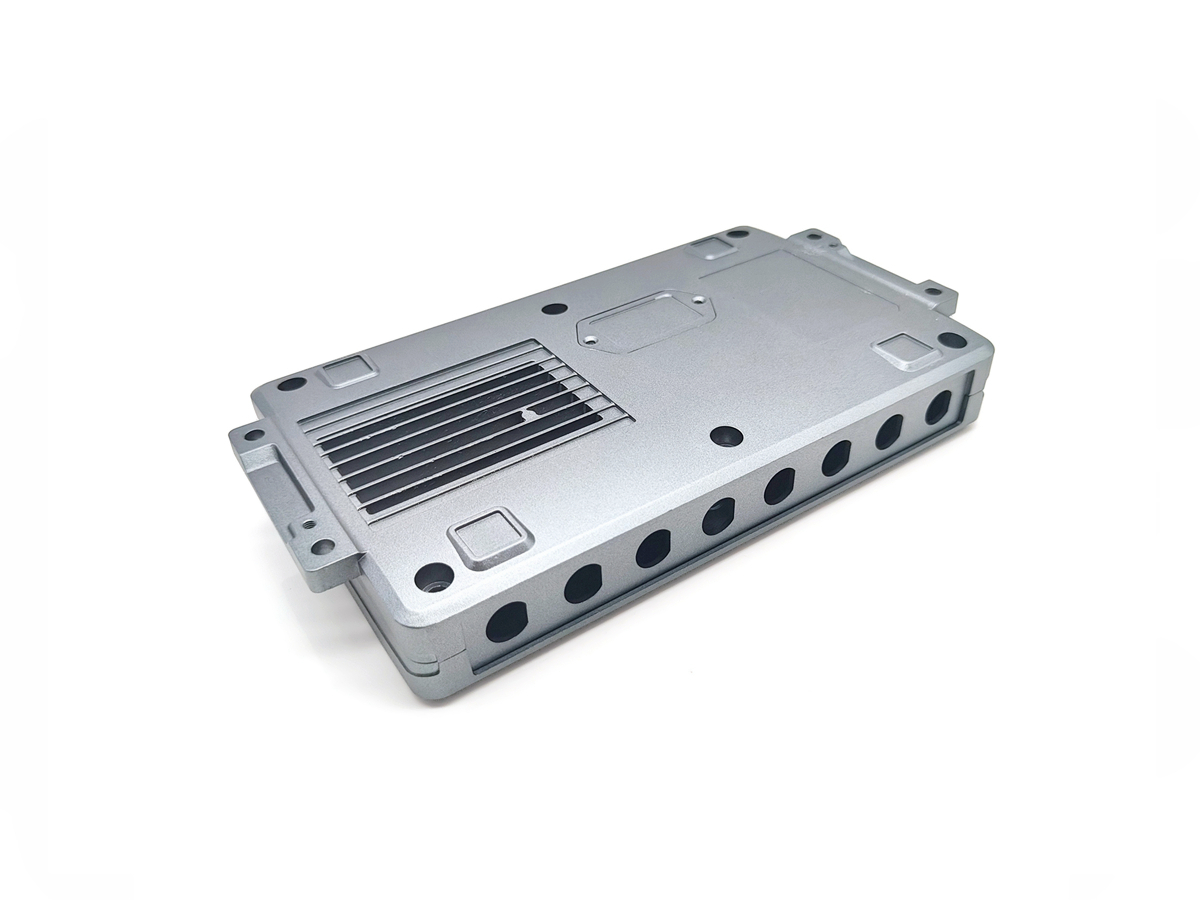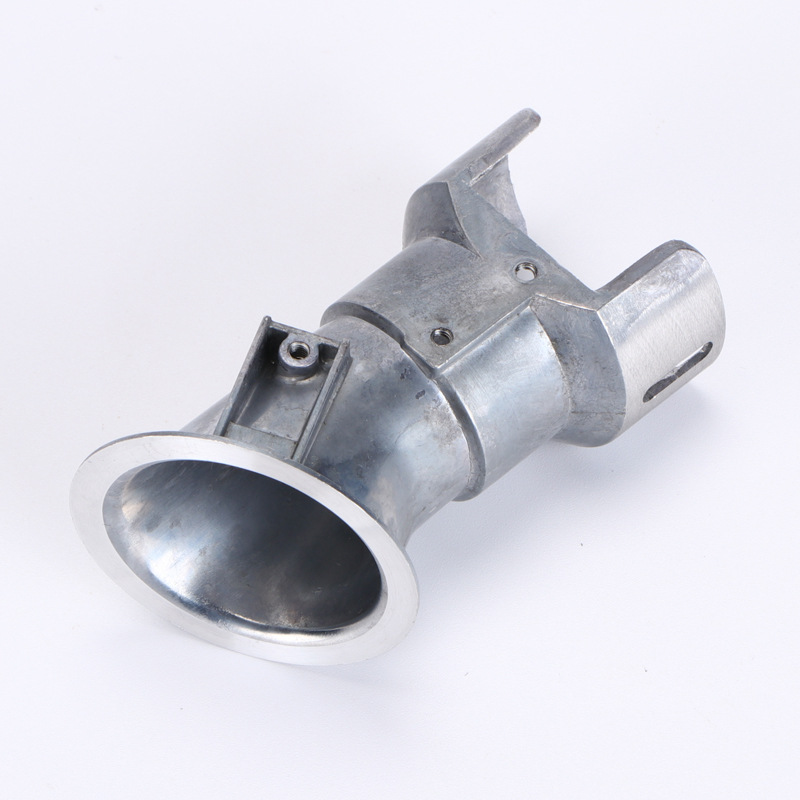A413
A413 aluminum alloy is specifically engineered for applications demanding superior pressure tightness, smooth surface finishes, and dimensional stability. It is widely used in hydraulic systems, engine components, and high-integrity enclosures requiring leak-free performance and excellent machinability.
At Neway, we offer expert A413 die casting services backed by integrated tooling, post-machining, and surface treatment capabilities to meet demanding technical specifications.
Key Characteristics of A413 Aluminum Alloy
Property | Value |
|---|---|
Density | 2.66 g/cm³ |
Ultimate Tensile Strength | ~330 MPa (47,800 psi) |
Yield Strength | ~165 MPa (23,900 psi) |
Elongation at Break | ~3.0% |
Thermal Conductivity | ~120 W/m·K |
Coefficient of Thermal Expansion | ~21 µm/m·°C |
Brinell Hardness | ~85 HB |
Pressure Tightness | Excellent (up to 200 bar) |
Casting Fluidity | Excellent |
Due to its elevated silicon content and tight microstructure, A413 ensures minimal porosity, enabling it to meet stringent sealing requirements in pressure-bearing environments.
Chemical Composition of A413
Element | Percentage (%) |
|---|---|
Silicon (Si) | 11.0 – 13.0 |
Iron (Fe) | ≤ 1.3 |
Copper (Cu) | ≤ 1.0 |
Magnesium (Mg) | ≤ 0.10 |
Zinc (Zn) | ≤ 1.0 |
Manganese (Mn) | ≤ 0.35 |
Nickel (Ni) | ≤ 0.50 |
Tin (Sn) | ≤ 0.15 |
Others | ≤ 0.50 (total) |
Aluminum (Al) | Balance |
This composition profile—particularly its high Si range—provides A413 with superior casting fluidity and internal pressure resistance, making it ideal for thin-walled, leak-free die casting.
Mechanical Properties of A413 Aluminum Alloy
A413 performs well under both static and dynamic loading, with particular strength in sealed fluid systems and precision housing applications.
Property | Value (as-cast) |
|---|---|
Ultimate Tensile Strength | ~330 MPa (47,800 psi) |
Yield Strength (0.2% offset) | ~165 MPa (23,900 psi) |
Elongation at Break | ~3.0% |
Fatigue Strength (10⁸ cycles) | ~120 MPa (17,400 psi) |
Modulus of Elasticity | ~70 GPa |
Brinell Hardness | ~85 HB |
Leak Resistance | Excellent (≤ 0.05 cc/min at 150 psi) |
The mechanical profile makes A413 suitable for components under moderate mechanical loads but requiring strict tolerance on leakage or micro-voids.
Benefits of Using A413 in Die Casting
Exceptional Pressure Sealing: Reliable for castings requiring zero porosity and high fluid integrity.
Fine Surface Finish: Enables tight sealing surfaces and minimizes secondary finishing requirements.
High Thermal Conductivity: Supports rapid heat dissipation in engine and electronics applications.
Dimensional Precision: Excellent mold reproduction of thin walls and fine features.
Process Efficiency: Shorter cycle times due to its high fluidity and low shrinkage.
Typical Applications of A413 Die Cast Parts
A413 is primarily selected for applications requiring both high surface quality and internal soundness:
Hydraulic and Pneumatic Components: Valve bodies, manifolds, cylinder covers
Automotive: Transmission housings, turbocharger casings
Industrial Equipment: Pump covers, pressure vessels
Consumer Electronics: Heat spreaders, sealed housings
Instrumentation: Precision measuring device enclosures
Its ability to maintain pressure resistance and part geometry makes it invaluable in mission-critical systems.
CNC Machining Considerations for A413
A413’s high silicon content makes it relatively abrasive, so proper tooling and cooling strategy are essential for efficiency and finish quality.
Machining recommendations:
Tool Material: Carbide or PCD tools preferred for durability
Speed: Milling: 250–500 m/min; Drilling: 80–150 m/min
Feed Rate: 0.05–0.15 mm/rev depending on feature geometry
Coolant: Water-soluble or emulsion-based coolant to prevent built-up edge
Surface Finish: As-machined Ra ≤ 1.6 µm achievable
All critical sealing features can be machined to tight tolerances (±0.03 mm) with appropriate process controls.
Surface Treatments for A413 Parts
To extend service life or meet branding standards, A413 parts can undergo various post-processing steps:
Tumbling: Prepares the surface by removing minor burrs or flash.
Anodizing: Limited compatibility due to high silicon—used primarily for functional coatings.
Powder Coating: Excellent adhesion, used for external components.
Painting: Common for parts needing aesthetic finishing with protective function.
At Neway, all surface finishing undergoes rigorous QC checks for coating thickness, adhesion, and corrosion resistance.
Why Choose Neway for A413 Die Casting?
Neway provides complete in-house aluminum die casting solutions, from design for manufacturability to high-pressure tooling, mass production, and downstream quality verification. Our engineering team ensures optimal gate design, solidification control, and porosity mitigation for every A413 project.
FAQs:
What makes A413 suitable for pressure-tight components?
Can A413 be anodized or powder coated effectively?
How does A413 compare to A380 in surface finish quality?
What CNC strategies are recommended for A413 aluminum?
Is A413 aluminum ideal for thin-wall castings?


